The Two Chestnuts
We do indeed have two trees in the UK that we call Chestnuts. One has been here probably since Roman times, and one has been here since its introduction in the 1600s.
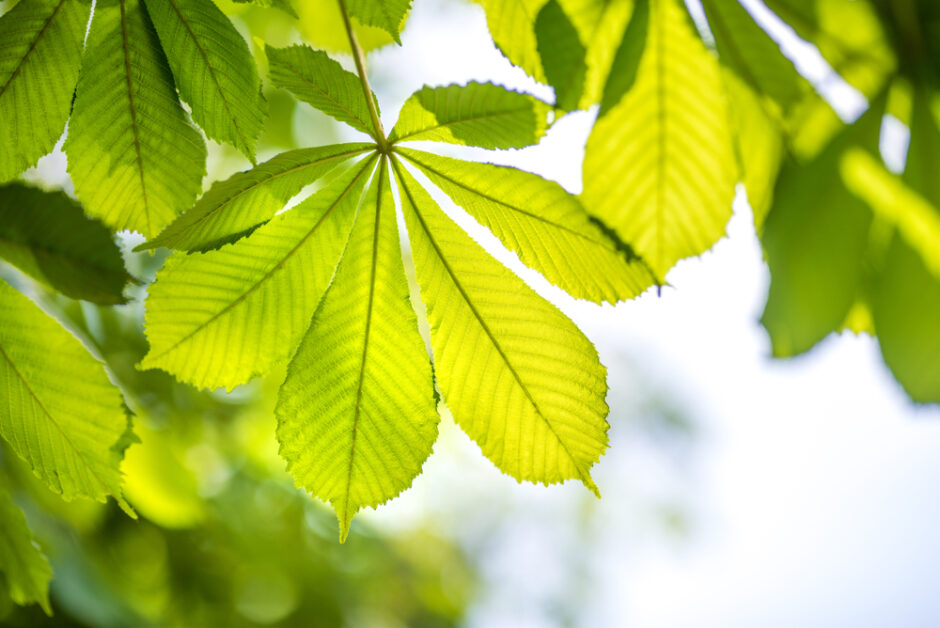
This is the leaf of a large tree which is commonly known as the Horse Chestnut. It’s leaf is known as being ‘Compound Palmate’, and all 6 or 7 parts held on a stalk together form one leaf.
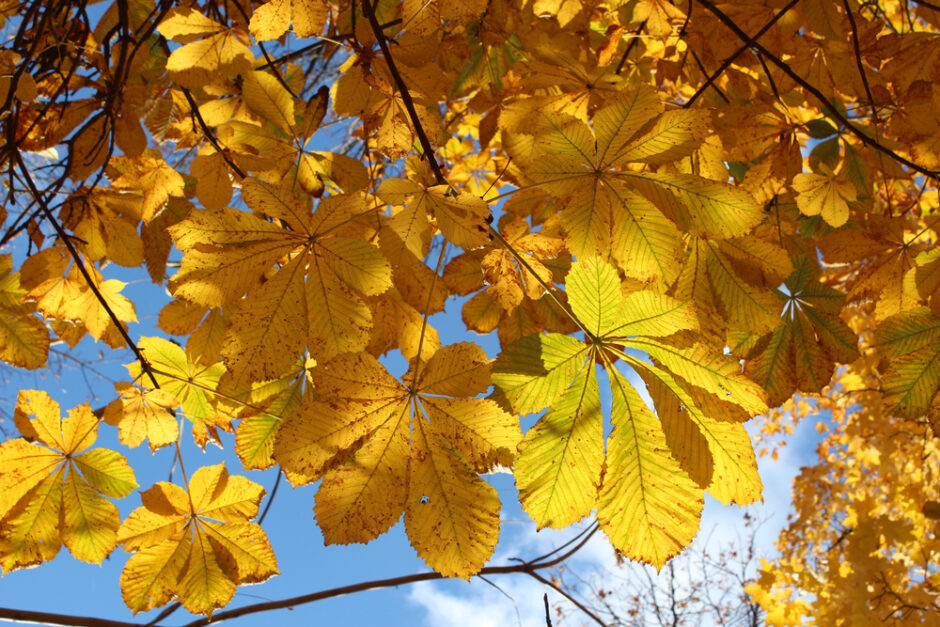
In the autumn months these green leaves change to the familiar coppery golden hues that you see here, before falling to create a vast covering on the ground.
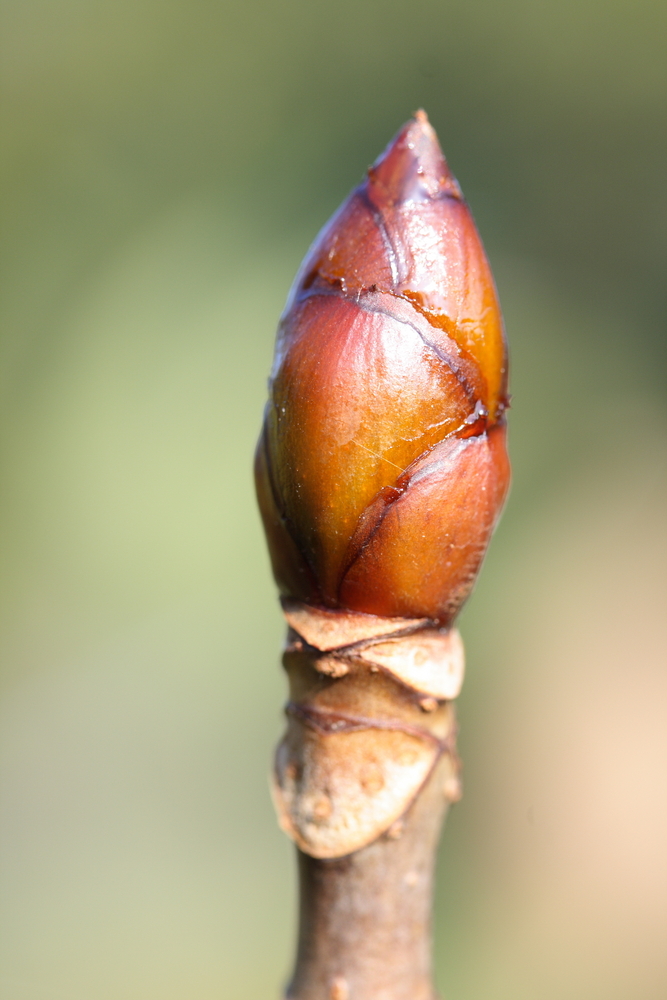
This is the “Sticky Bud” that we may all have been introduced to in our early years at School. As buds go, it really is a whopper. Just below the bud you can see a horse-shoe shaped mark which indicates where last years leaf stalk was attached. I guess that this is possibly and more than likely to be the reason that the common name ‘Horse’ Chestnut has arisen.
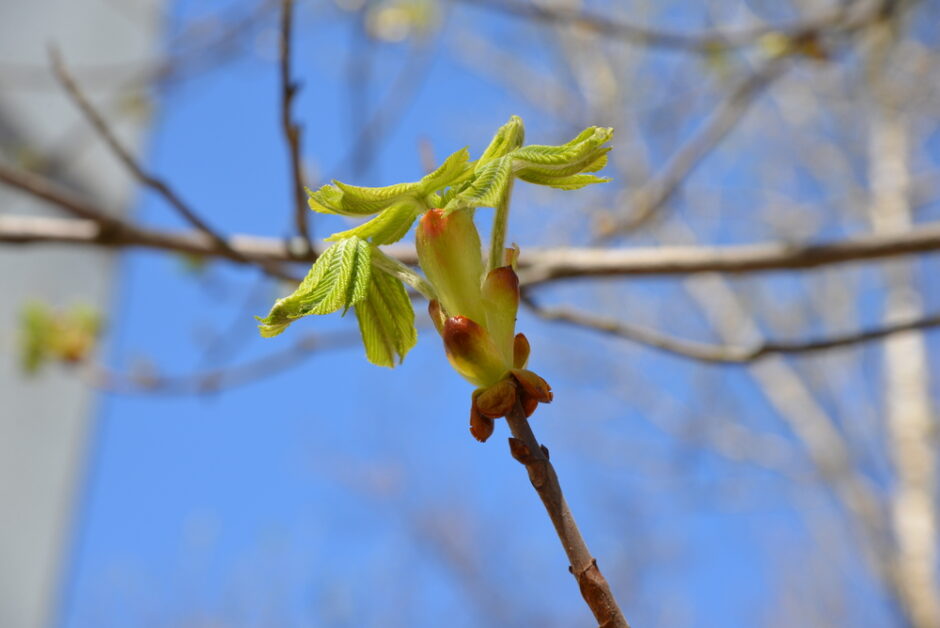
When things warm up a bit, the sticky buds swell and a remarkable transformation occurs really quite quickly. Within a matter of only a few days the neatly encased sticky bud pushes out these strange-looking leaves ……
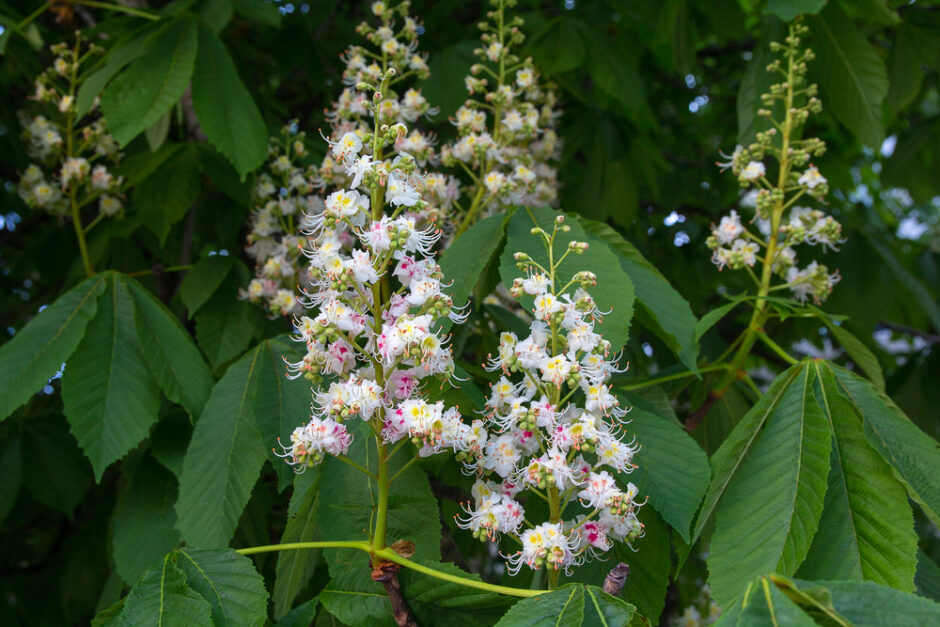
…… and shortly after the leaves are fully formed the flower appears. And this tree-like flower, which you would swear was white is made up of individual flowers whose white colour is added too in a way where every other flower has a splash of yellow inside, and the others have a spash of red.
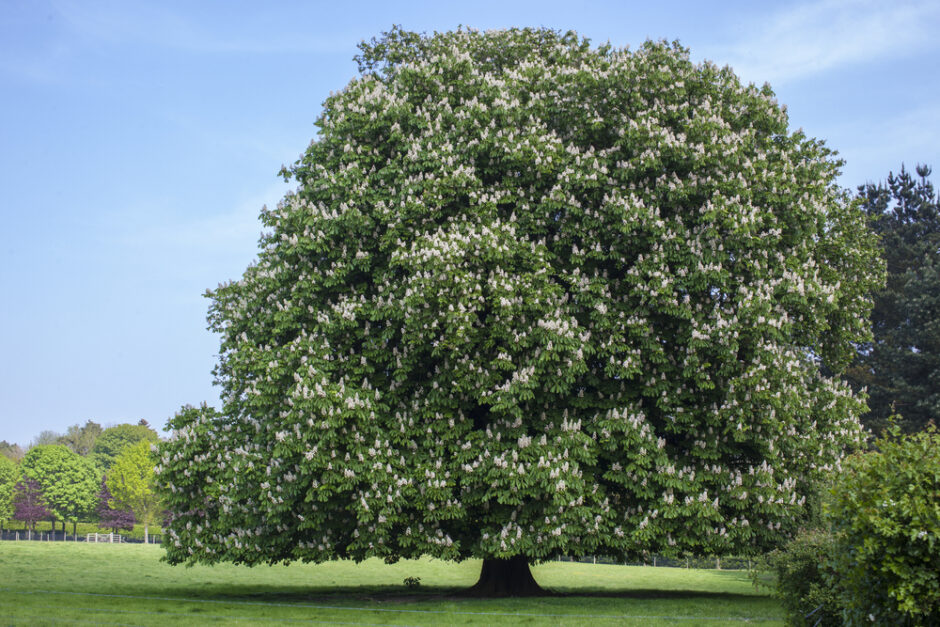
But the overall impression is white. And if a Horse Chestnut is in flower, then the month is May. So if you see a film with a Horse Chestnut in flower and the story is trying to suggest it’s August or some other summer month ….. it isn’t …. IT’S MAY.
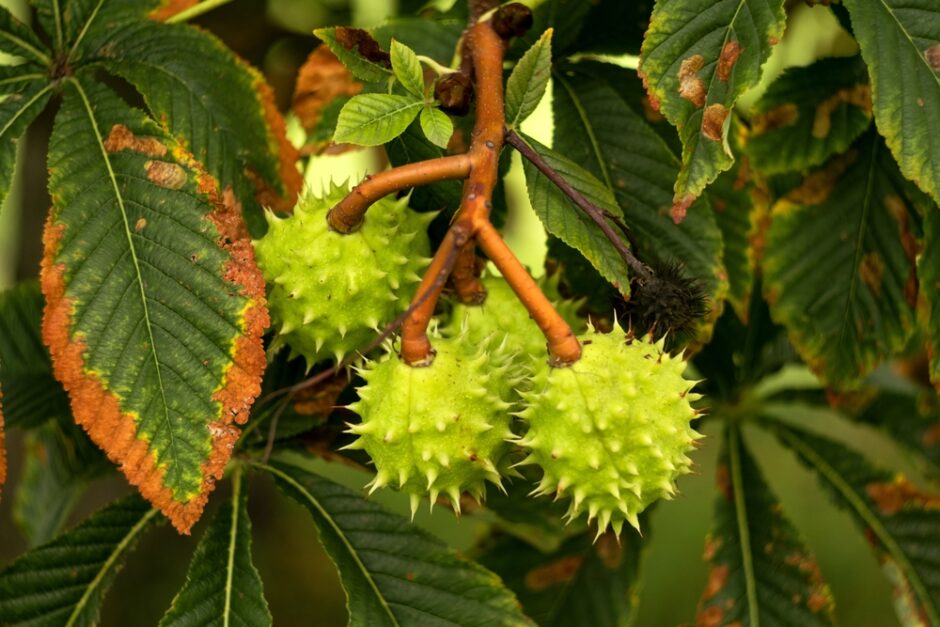
The purpose of a flower of course is to produce seed, and the seed of the Horse Chestnut is held in these cases which resemble mediaeval weapons.
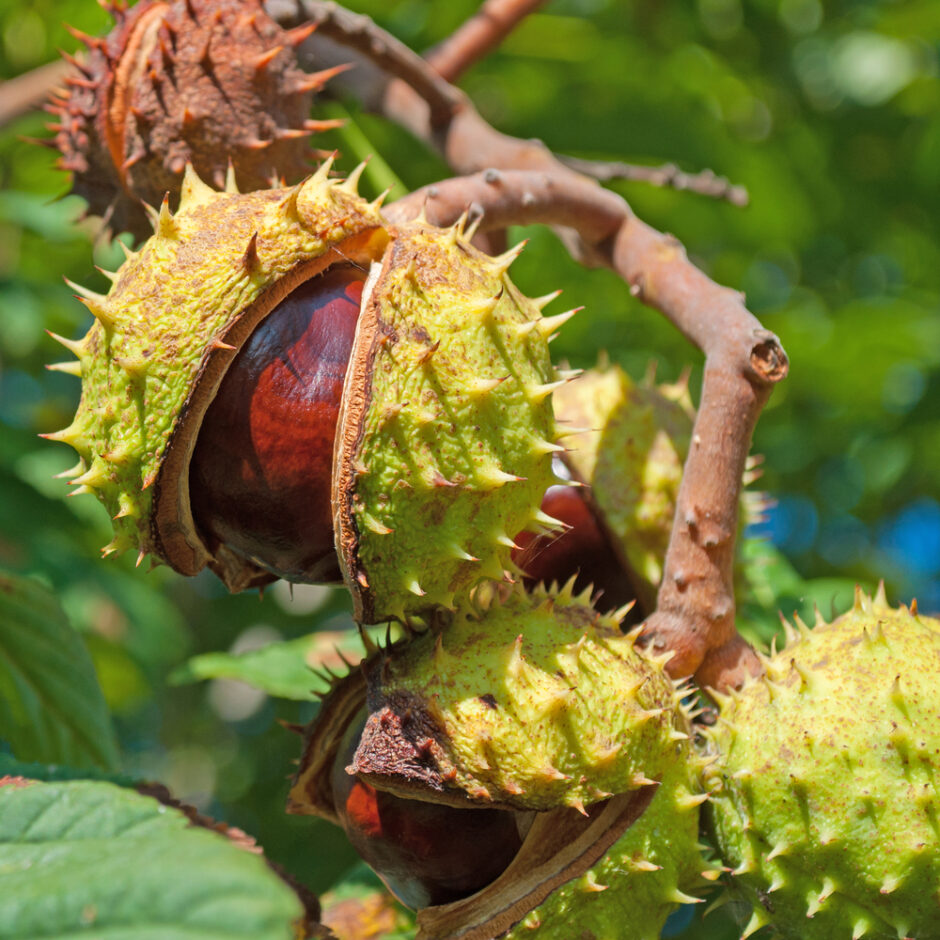
Once ripened, the cases open and the seed or Conker falls out.
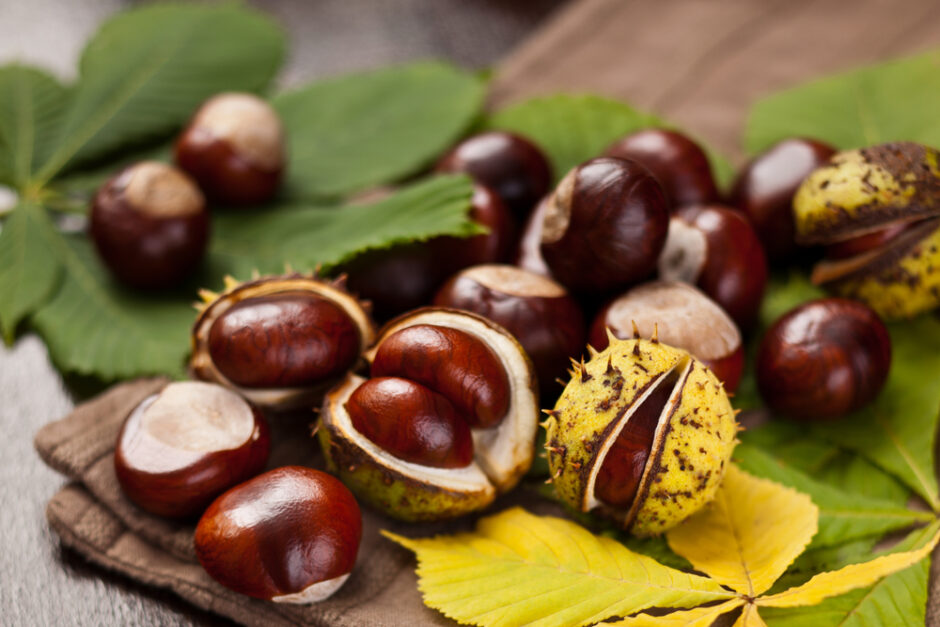
The second Chestnut that we have in the UK is the Sweet or Spanish Chestnut – Castanea sativa.
A large tree which is capable of exceeding 30 Metres in height, this is the one that was probably introduced by the Romans.
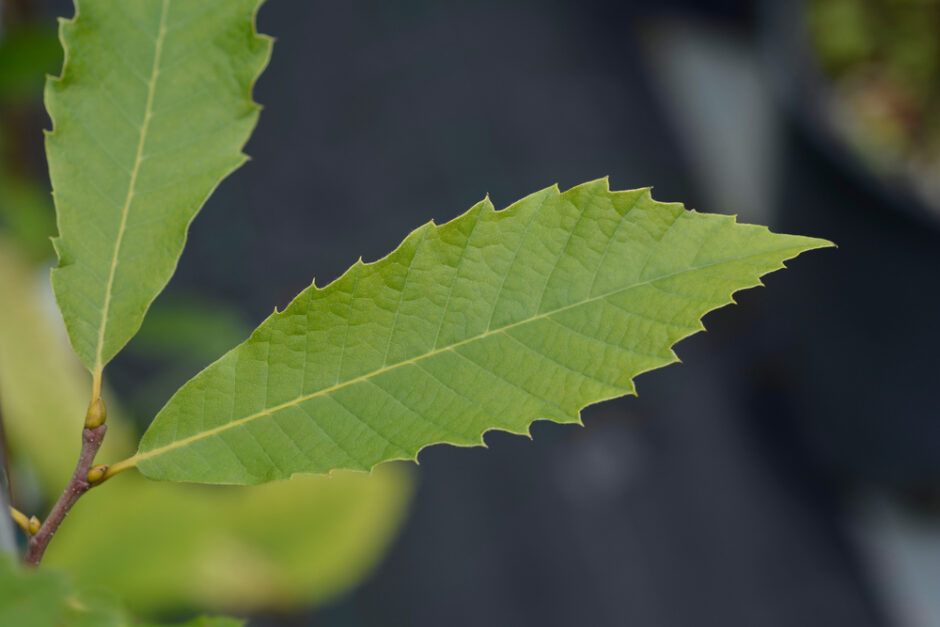
And this is its leaf. Not compound like the Horse Chestnut. For this Chestnut actually belongs to the same Family as the Beech Tree, and each individual is a leaf. And as you can clearly see from this image, its bud doesn’t resemble the Horse Chestnut either.
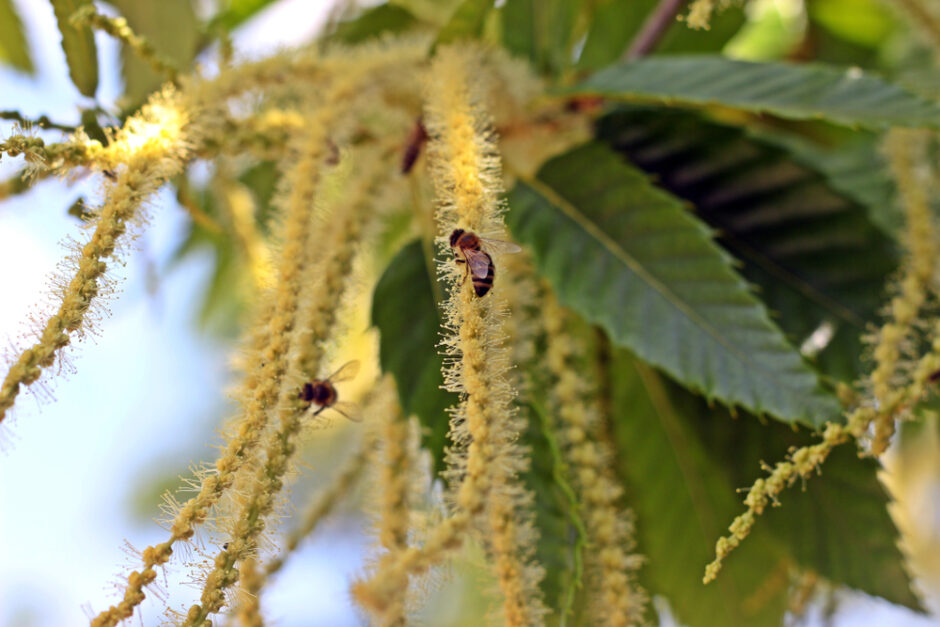
And the flower of the Sweet Chestnut is hardly ornamental. And whilst the Horse Chestnut has no noticeable scent, the Sweet Chestnut flower smells horribly like scouring powder ……
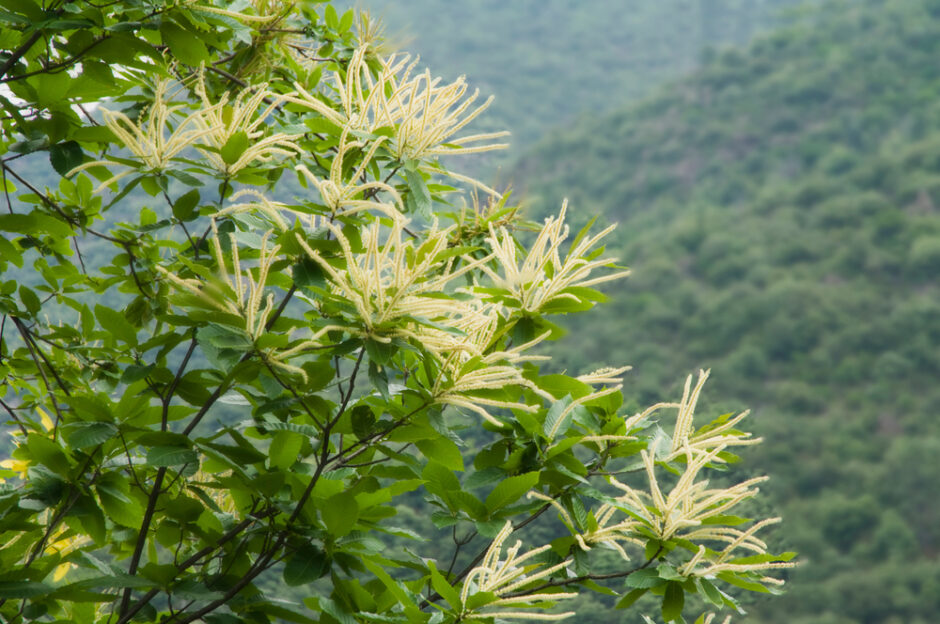
…… but in its own way it’s quite a sight nevertheless.
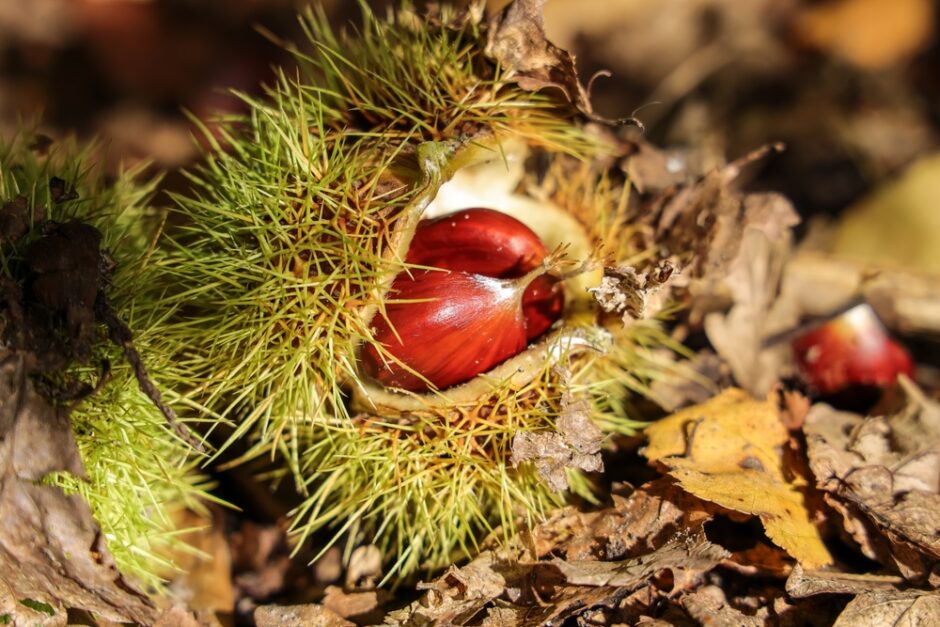
But the resulting seed is the Chestnut that is famously roasted at Christmas time. But that’s not it’s only virtue …… An ancient forest craft that still exists in the UK is that of making things out of Chestnut Coppice. For although the tree produces vast quantities of its sweet nuts, its timber is among the longest lasting and most durable timbers that there are. It grows to a useable size quite quickly, splits easily along its grain to make fence rails. Very useful if you are a Roman. It is still harvested in these most modern of times, chiefly in Kent, where there are large acreages of Chestnut coppice growing quietly away. A County where Chestnut Auctions are still held in the Autumn, and skilled craftsmen gather to bid to buy fresh uncut Chestnut Coppice so that they can spend the winter months in the woods, cutting the coppice and making posts and rails and many other things besides.
